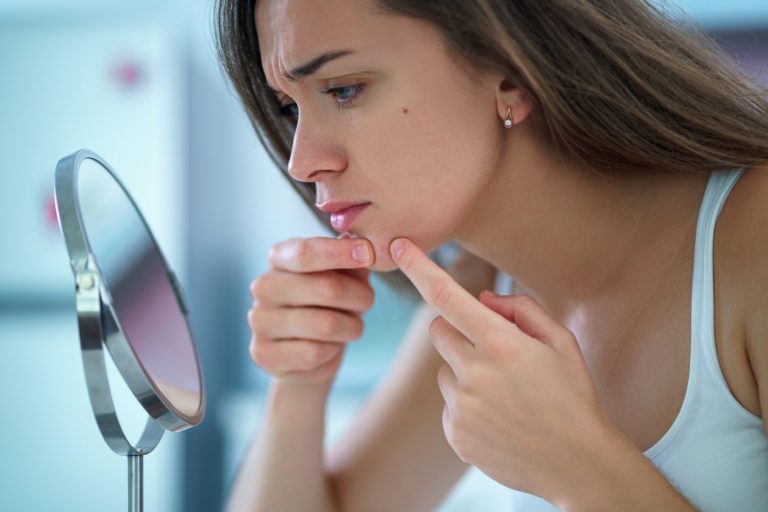Cystic Acne – What You Need To Know

Breakouts and acne are things that everyone will go through at a stage in their lives at one point or another, some being more severe than others. According to the American Academy of Dermatology, 85% of people experience at least minor acne, which can occur at any age, and may continue into one’s 30s and 40s. For those who have struggled with chronic acne and breakouts, the search for the correct routine and solution can feel endless. People who experience cystic acne however, have an even more difficult time treating it as cystic breakouts are painful and deep, requiring stronger treatment.
Cystic acne is the most severe form of acne. It develops by cysts forming deep beneath the skin, causing oil, bacteria, and dead skin cells to block your pores. It’s formed by inflammatory nodules under the skin and can be extremely painful. Oil production, bacteria, hormonal changes and diet can all have an effect on acne. That being said, each case is different, and depending on factors such as lifestyle, genetics, inflammation, as well as your skin’s individual condition, the products and routine that will be most effective are unique to you.
Acne has many forms and levels of severity, but cystic acne is by far considered the most difficult to treat. Cystic breakouts differ from other forms of acne because they do not contain a core of bacteria and pus, so attempting to squeeze or pop cystic breakouts is never a good idea, as it can make things worse and further irritate your skin, or lead to scarring.
How To Handle Cystic Breakouts
Regardless of where your cystic acne shows up, the fact that it’s formed deep beneath your skin means that you most likely will be able to feel a breakout as it begins to form. Icing it can dramatically improve swelling and keep it from growing worse, as with any other swelling that occurs on your body from an injury. Doing this will immediately decrease redness and size. According to dermatologist Dr. Seichner, “Ice-cold temperatures help constrict blood vessels, so wrap an ice cube in a paper towel and hold it against the bump to reduce pimple redness and bring down the swelling.” He also recommends that you ice the area three times an hour, post washing your face.
Helpful Ingredients
Combining ingredients that will work together to combat cystic acne is one of the most helpful ways to treat it. Salicylic acid and benzoyl peroxide are two powerhouses that can be used together for prime efficacy. When using these two ingredients to treat cystic acne specifically, it’s recommended to use a salicylic acid cleanser, moisturise with an oil free moisturizer, and then a benzoyl peroxide product as a spot treatment. Salicylic acid is a beta hydroxy acid (BHA) that can help minimize cystic pimples by clearing out oil and dead skin cells as it can penetrate pores and dry out debris. Benzoyl peroxide works by killing bacteria and reducing inflammation.
Many cases of cystic acne also respond well from topical retinoid treatments. Dermatologists say that using a retinoid is extremely effective at preventing cystic breakouts. They exfoliate the skin and remove oil from your pores, while keeping new acne from forming. Retinoids should not be used in combination with benzoyl peroxide products however, as the two are very powerful and would lead to inflammation, dryness and irritation if used together.
Hydrocortisone creams are also recommended, as they can reduce painful inflammation and redness, and can stop a breakout in its tracks before it fully forms.
In combination with topical treatments, antibiotics are often helpful in some cases by reducing bacteria formation. Check with a dermatologist if antibiotics are right for you, and can be purchased with a prescription.
As tough and stubborn as cystic acne can be, it can be treated with the proper care and treatment. Consult with a dermatologist about which of these treatments would be best for you.
